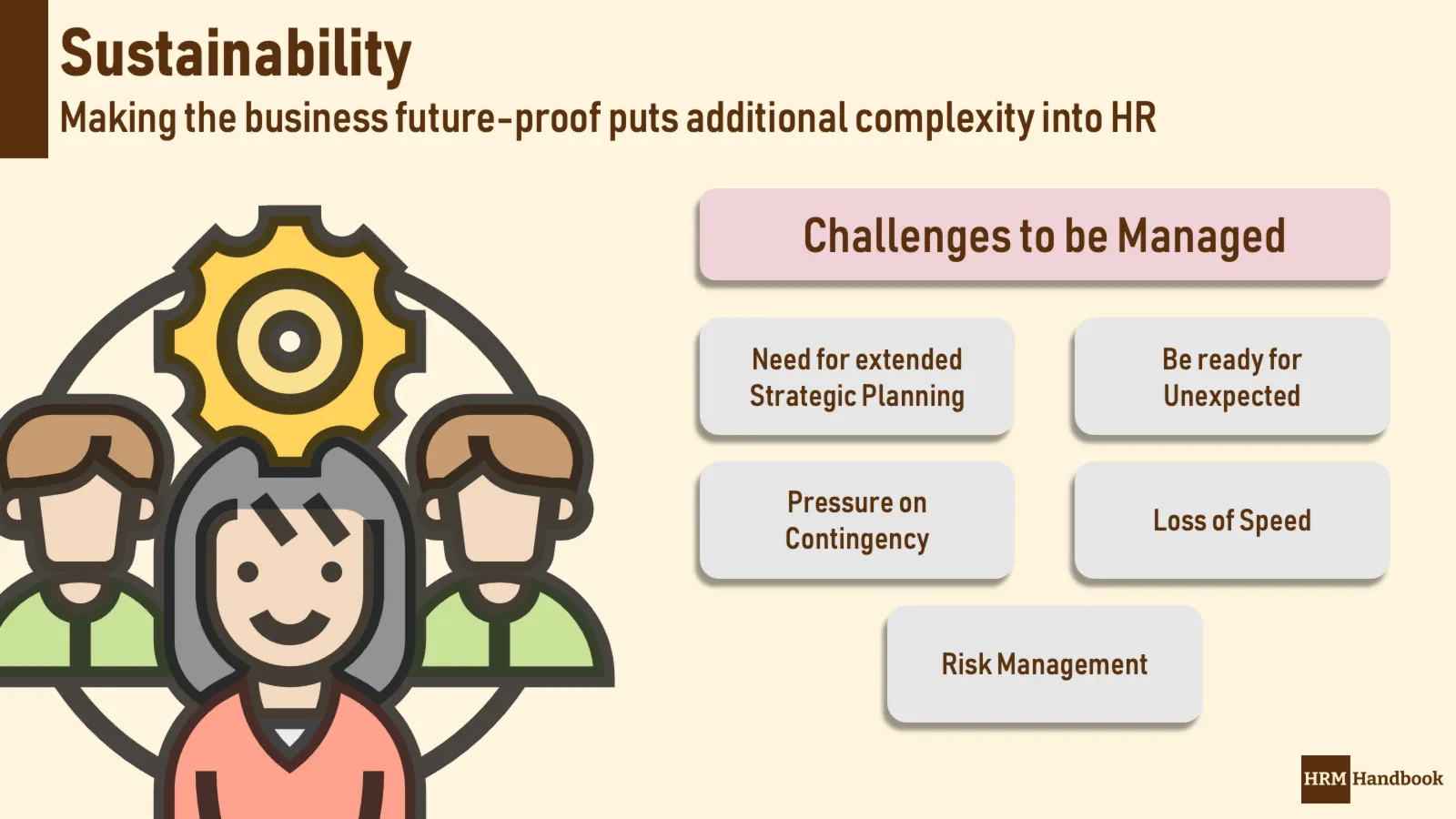Long-term business sustainability
In general, sustainability is defined as the ability to meet needs without sacrificing the ability of future generations to meet their needs. Of course, we are only human and we often see many examples of unsustainable business practices. All around us are companies that are living off the great past and have lost the drive (enthusiasm and passion) to bring new and innovative ideas and solutions.
Many organisations have stopped innovating their products and have been selling the same products for years without change. They quietly assume that what works today will work tomorrow. These companies are in the decline phase of the corporate life cycle. The challenge of HR sustainability is to reverse this trend and keep the firm agile and competitive enough. A high-performing organization always maintains an edge and is strongly supported by a human resource management strategy.
Human resources play a key role in maintaining the long-term sustainability of a business. They must ensure that the organisation maintains its flexibility to manage change and does not compromise in primarily critical areas. Competitiveness is very much about agility, speed and flexibility in decision making. It’s not about one right product, it’s about the overall set-up of the business to be able to respond quickly and flexibly to changing customer needs.
In meeting this challenge, Human Resources must work closely with the company’s top management and act together to achieve the optimal outcome. The HR department must support the business to innovate, keep an eye on the competition and enable employees to find new ways of working. In many companies, the HR department is the one that has the most contact with employees from competitors. This is an excellent opportunity to get a picture of how the competition is working and what problems they are solving.
Why is business sustainability so hard?
Having a long-term sustainable business is not free, it requires quite a high investment. Also, a company has to think on its back wheels and be what is called antifragility. That is, it’s easy to say, but very hard to convince investors who are interested in how net income and growth are trending quarter by quarter. Investors rarely look at a company for the long term, expecting a rapid and growing appreciation of their investment.

An organization with a clear focus on sustainability balances its profit with its growth requirements. It does not compromise on development and training. It invests a significant portion of revenue in improving available skills and competencies. Growth is usually realised through employees and we tend to forget this.
In addition, HR must ensure that the business does not compromise on business ethics. A sustainable company is very conscious of a strong corporate culture, does not tolerate any questionable practices and acts clearly and quickly when any violation is found. It takes ethics as a necessary foundation, even if it has a major impact on its business and operations. It simply does not compromise in this area.
Note that there is another issue of sustainability. It is about the balance of business so that future generations can live on planet Earth. The solution is always focused on respecting the environment around us, relating to communities, promoting education and providing more with less natural resources. However, this is not a challenge for human resources alone (the entire leadership team must be responsible for finding appropriate solutions).
Strategic Planning and Human Resources
Putting in place strategic human resources planning is always a good start to making a business sustainable in the long term. A strategic plan is always focused both internally and externally. It does not allow the organization to ignore external factors. The leadership team is pushed to find answers to all strategic challenges. It works the same way in human resources.
Strategic planning in human resources always starts with a general SWOT analysis that assesses the competitive position of people management in the organization. It must reflect all strengths and weaknesses so that the team works with the right inputs. The team must mark trends to each item. It helps to identify areas where the organization is improving or declining.
Strategic Planning requires the business to take a helicopter view. The team describes all the important elements in comparison to external competitors. It tracks trends and identifies relevant supporting data. The enterprise can learn new things from observing the market. An innovative idea can be generated during strategy sessions. Reflecting on internal developments and external innovations is always refreshing. It can recharge the batteries and refresh the willingness to change.
In addition, HR can identify skills and competency gaps during strategic planning sessions. It can spot gaps that were previously unnoticed. It can learn new approaches from competitors. They have had to overcome similar obstacles. They can illuminate the way forward.
The best way for HR to avoid the challenge of sustainability is through a competitive Learning Strategy. It inspires the leadership team to invest in workforce development. It gives employees clear goals and objectives and rewards them with personal growth. It pushes managers to seek outside inspiration. Overall, an excellent Learning Strategy keeps the organization ahead of the curve.